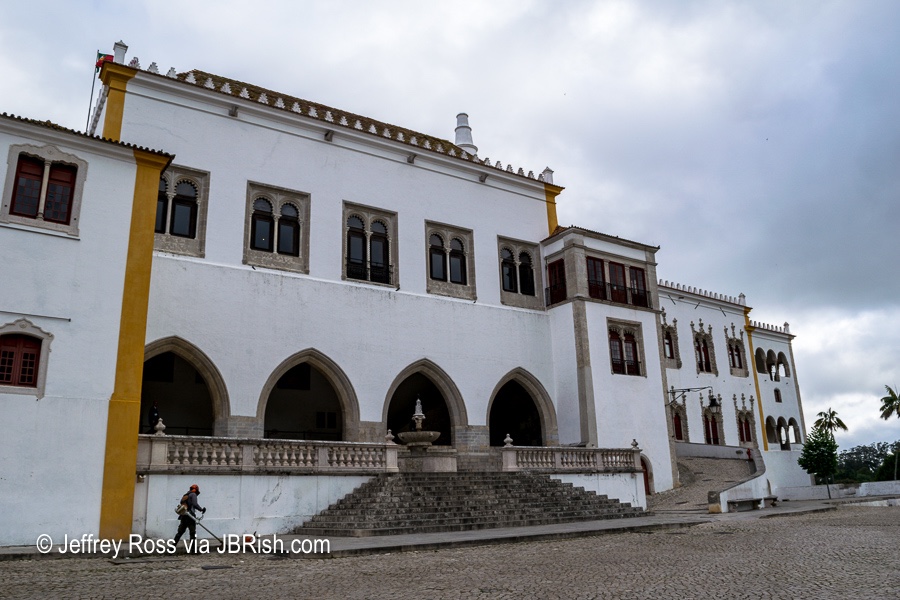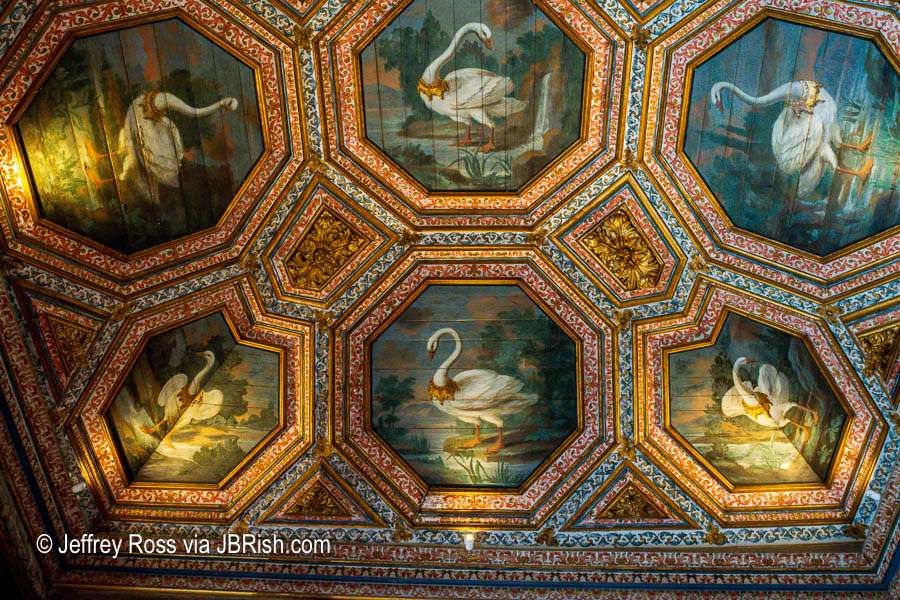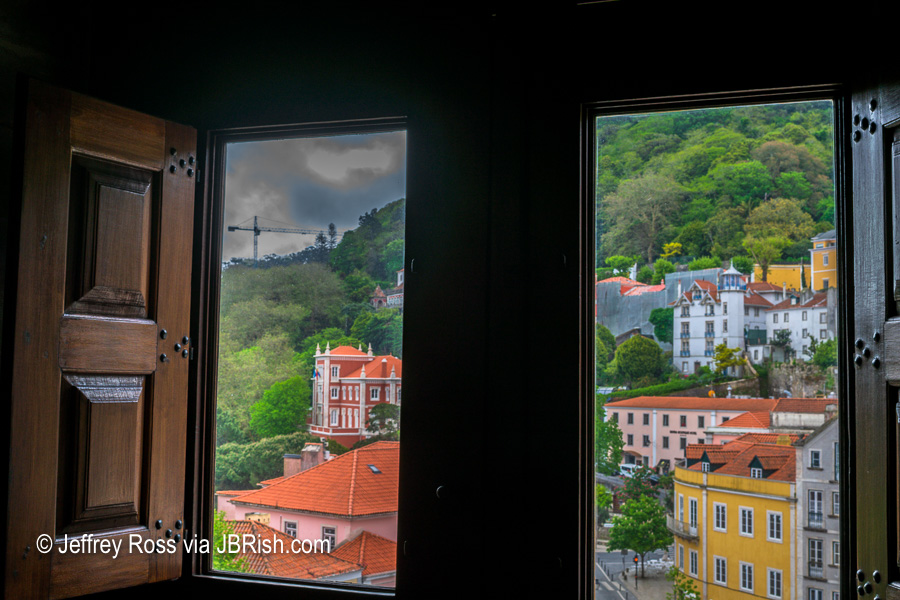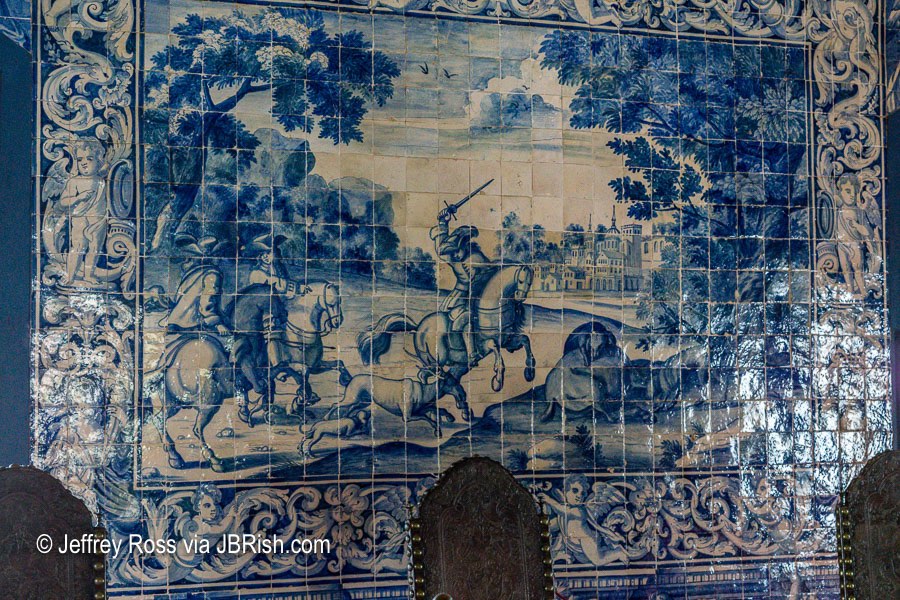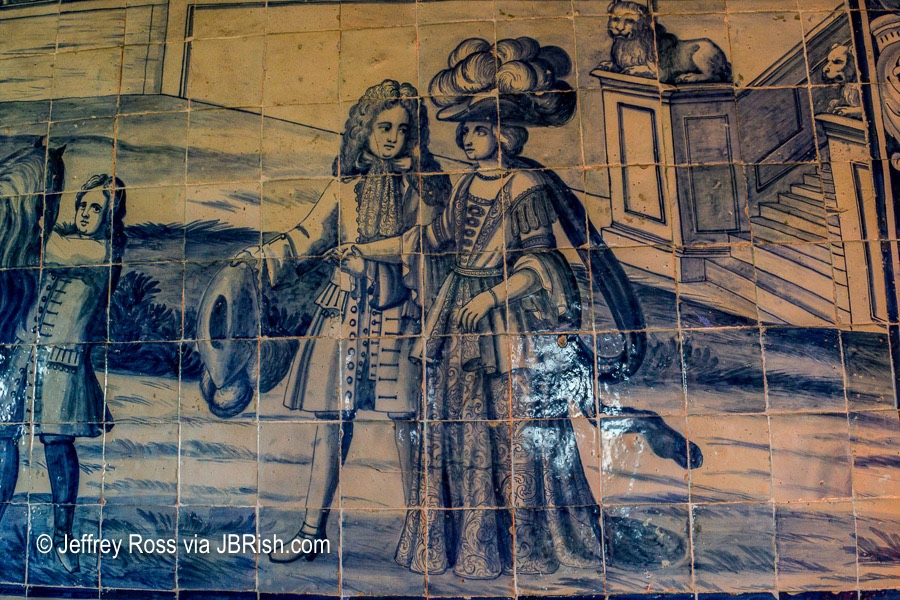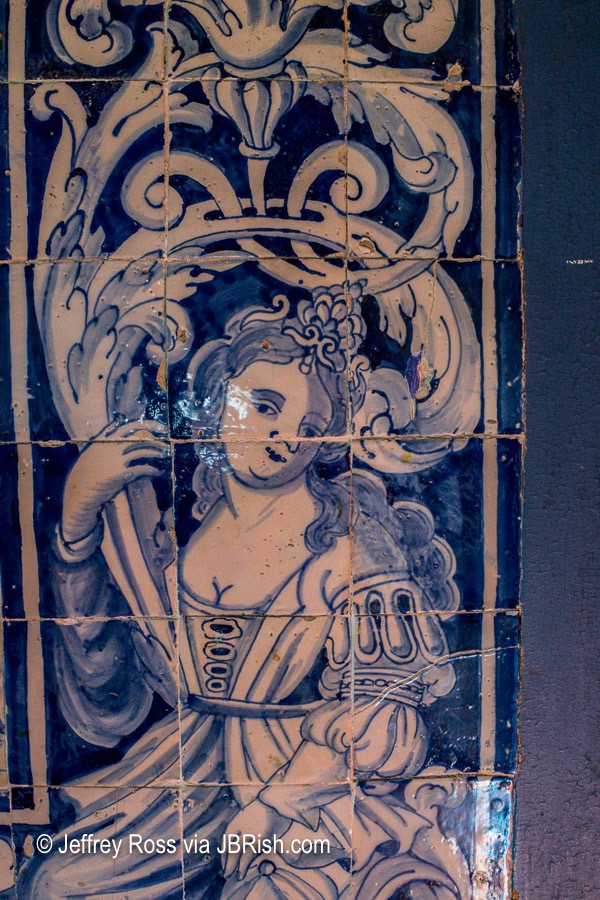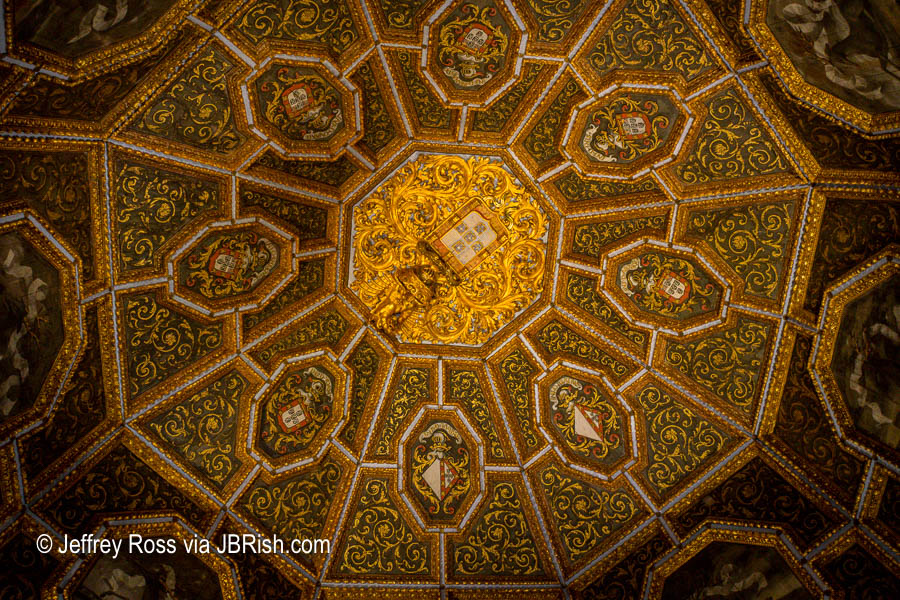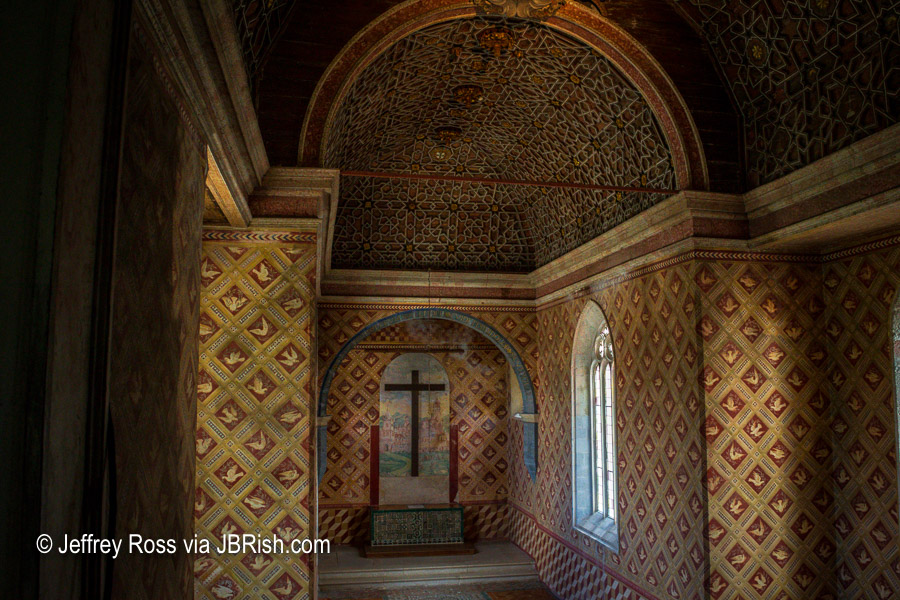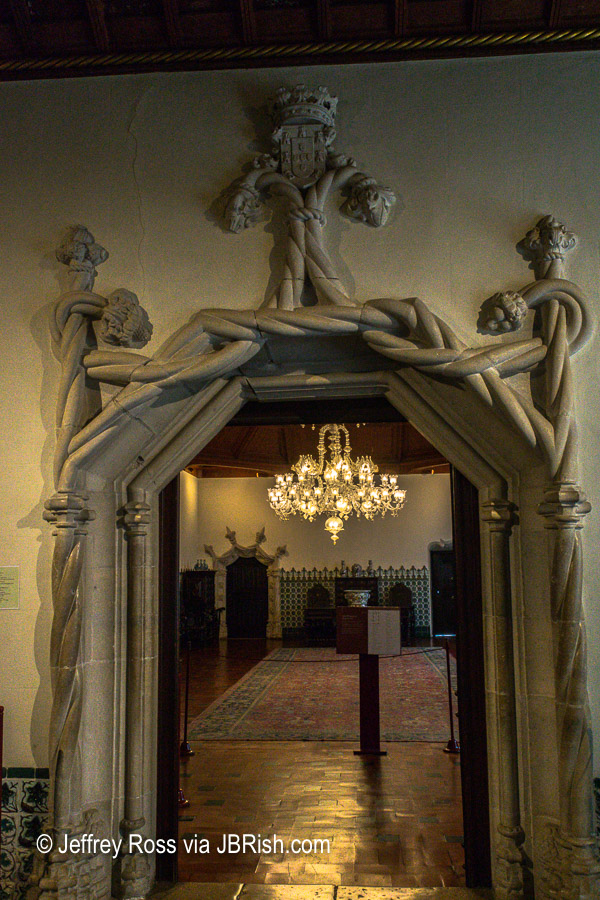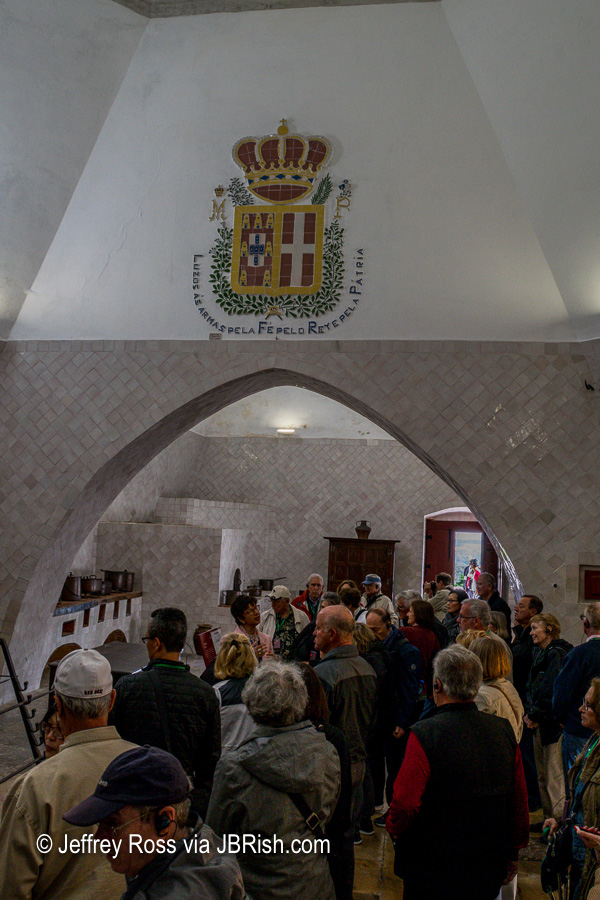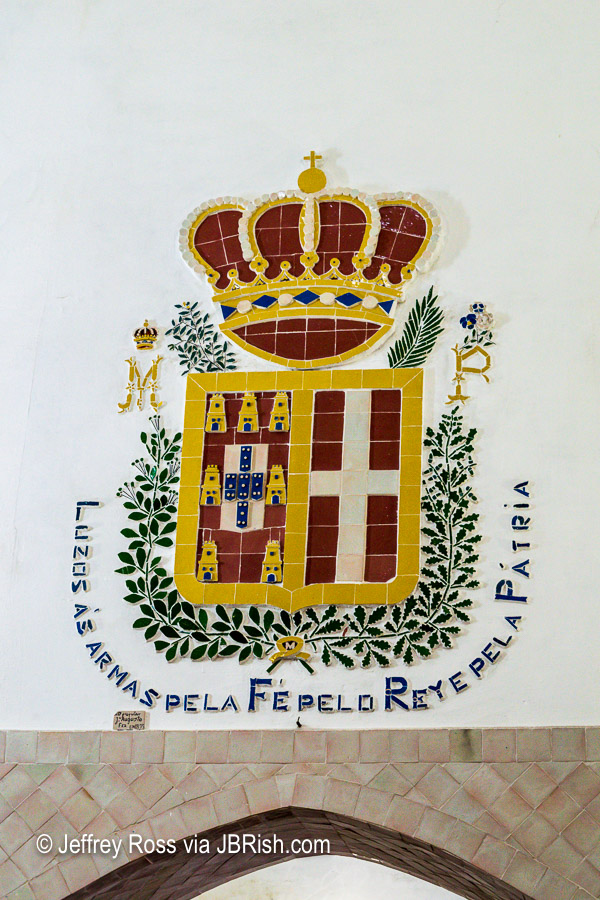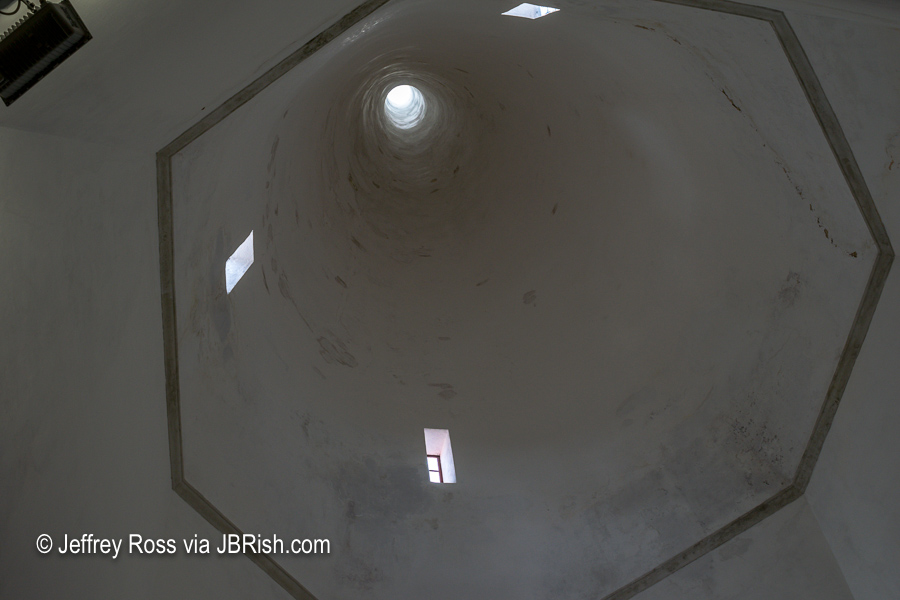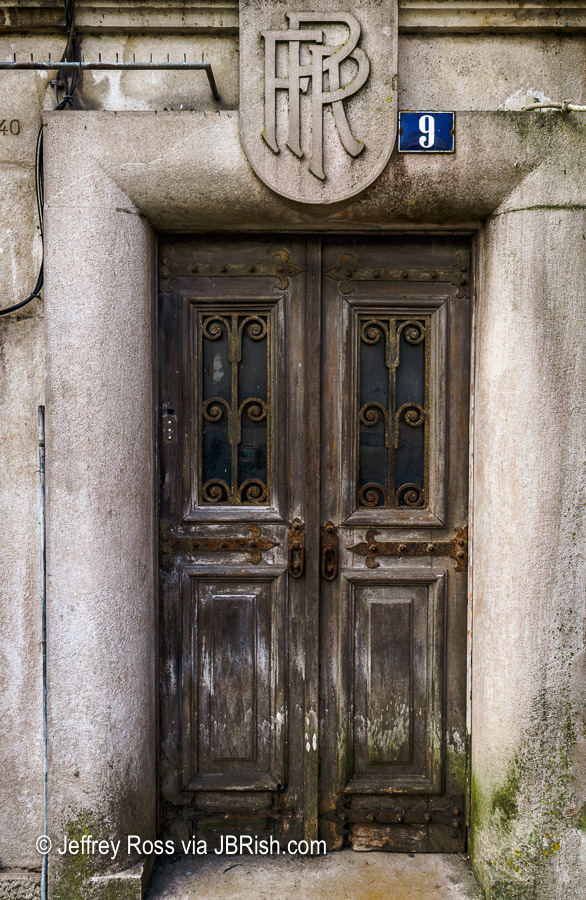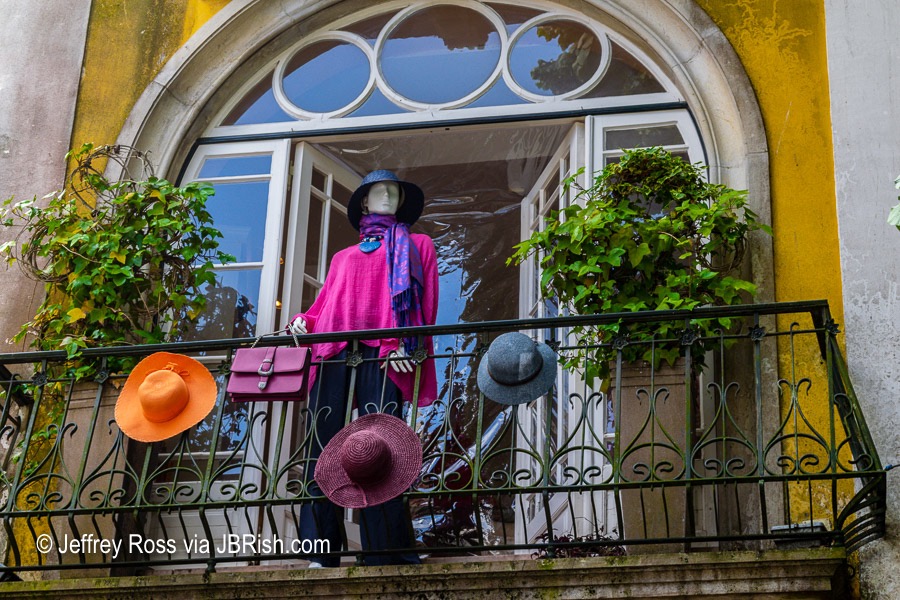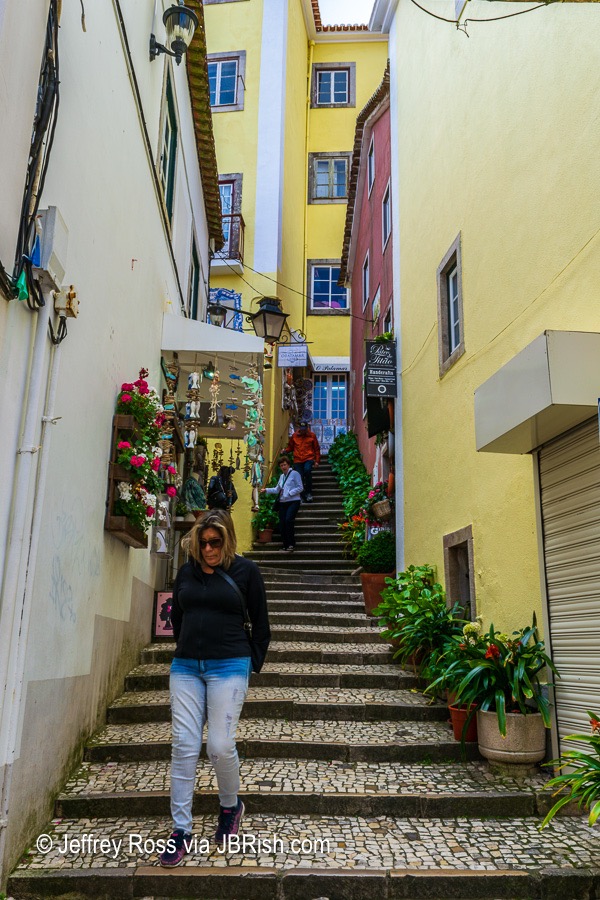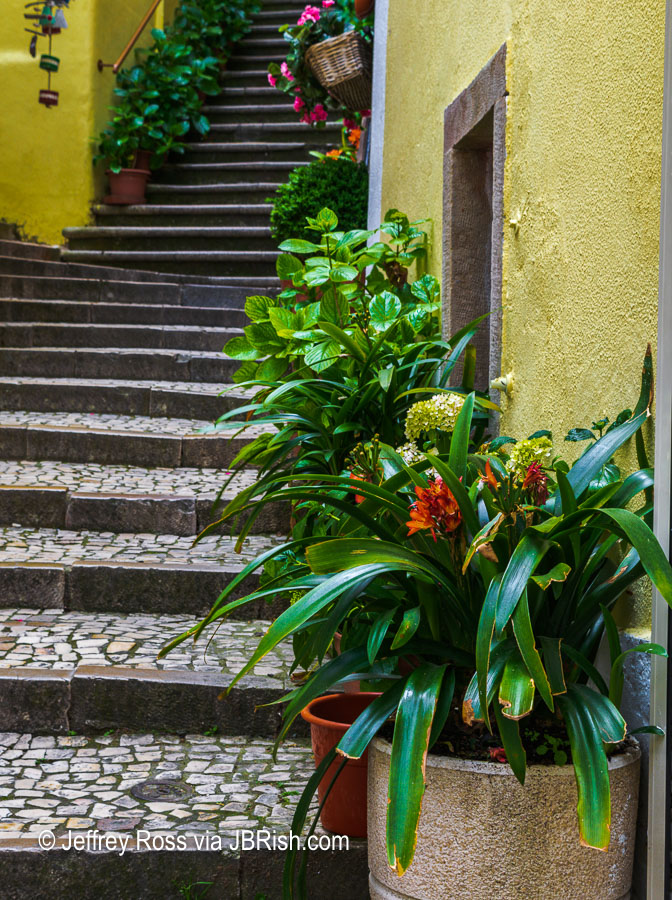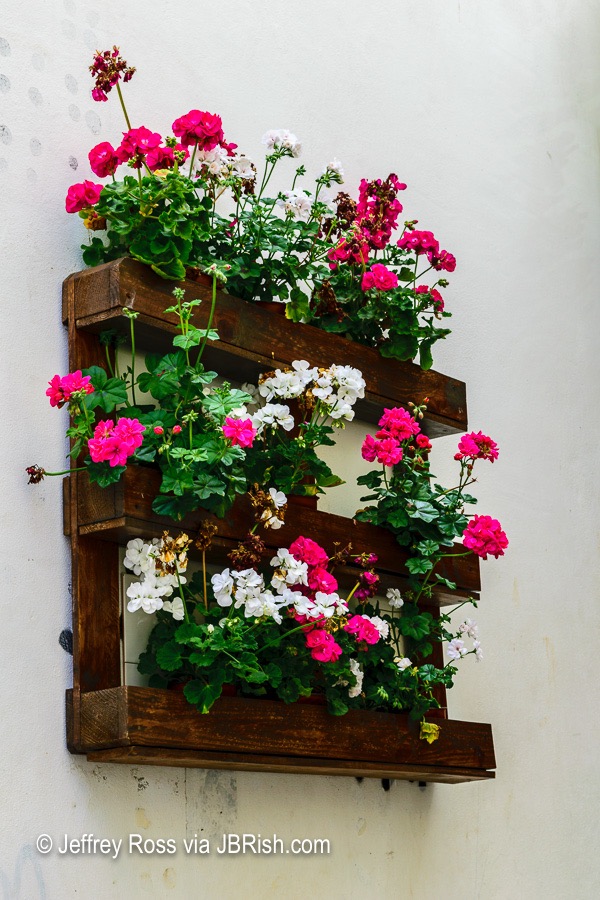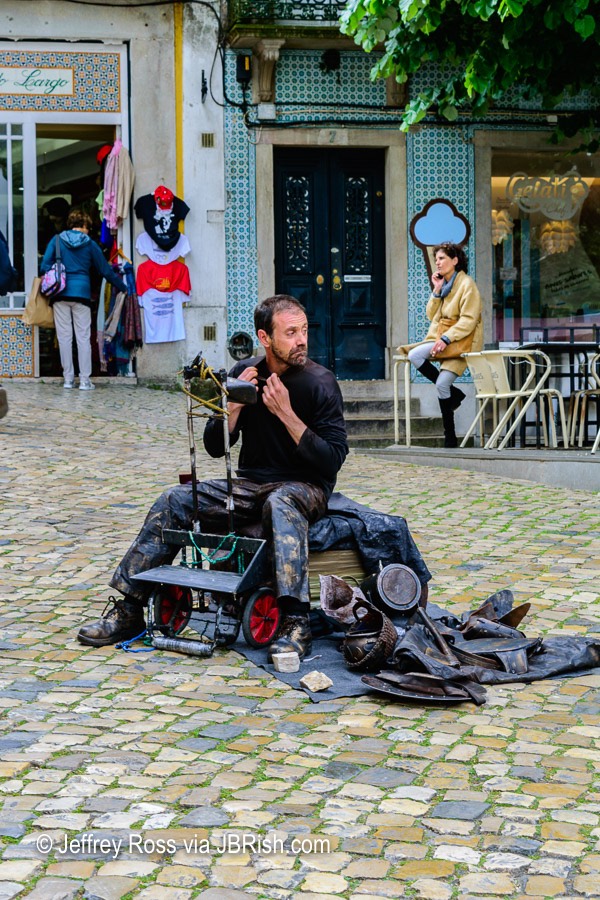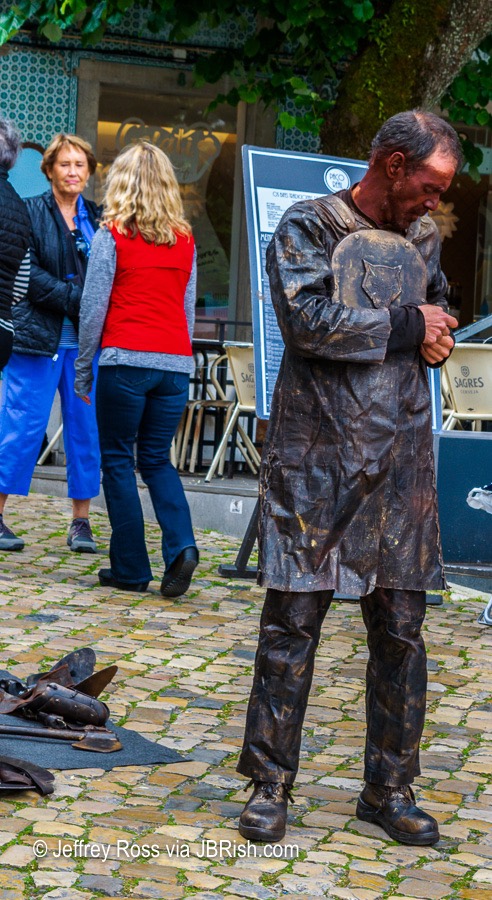As noted in my previous post about Evora, the town is quaint with typical Portuguese trappings such as the red-orange tile roofs, tiled walls, etc. It is the typical mix of the very old, the old and the new.
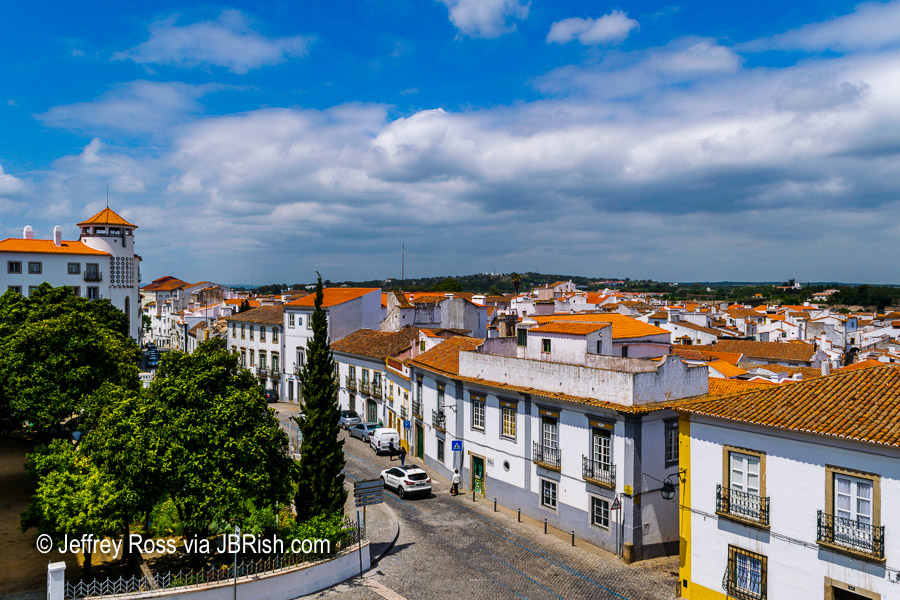
Most towns in Europe, and Portugal is no exception, have a major square. This is the somewhat understated square in the center of Evora.

It was another beautiful day enjoyed by all. Small balconies open on to the square to allow even the smallest apartments to have a view of what is taking place below.
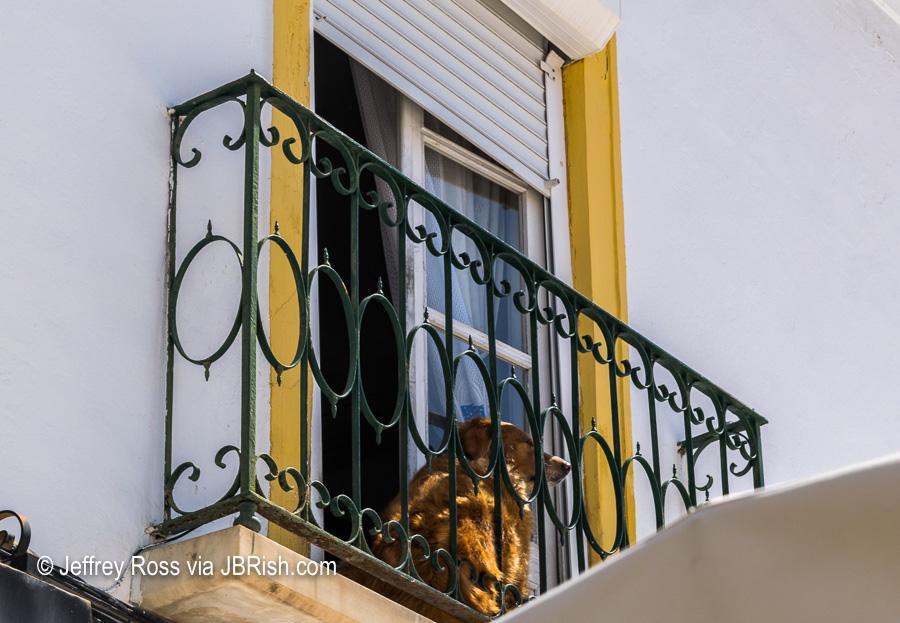
This unusual storefront is an example of the old style mixed with modern accents. Notice the contemporary wooden door and the security system in the upper-left.
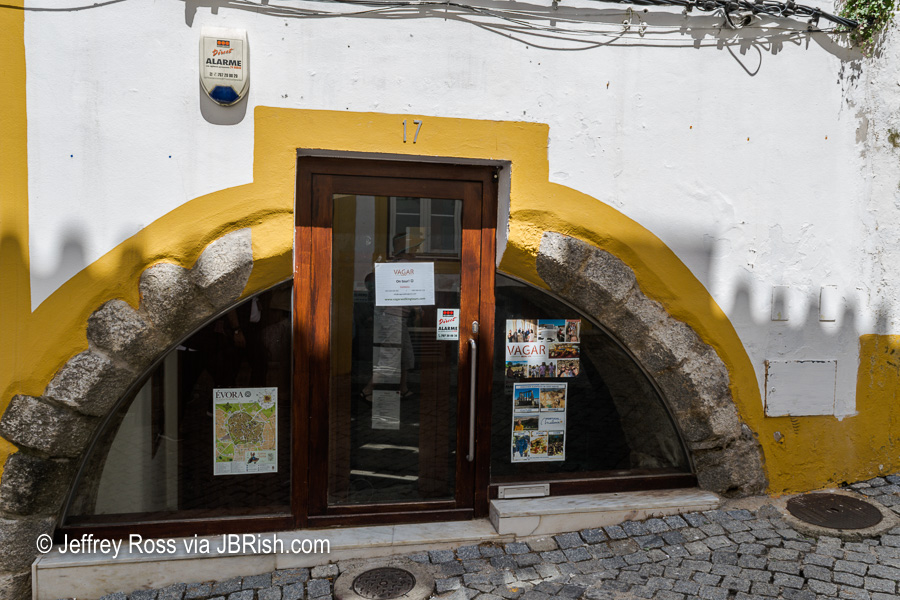
The drain pictured below was part of the ancient aquifer system…
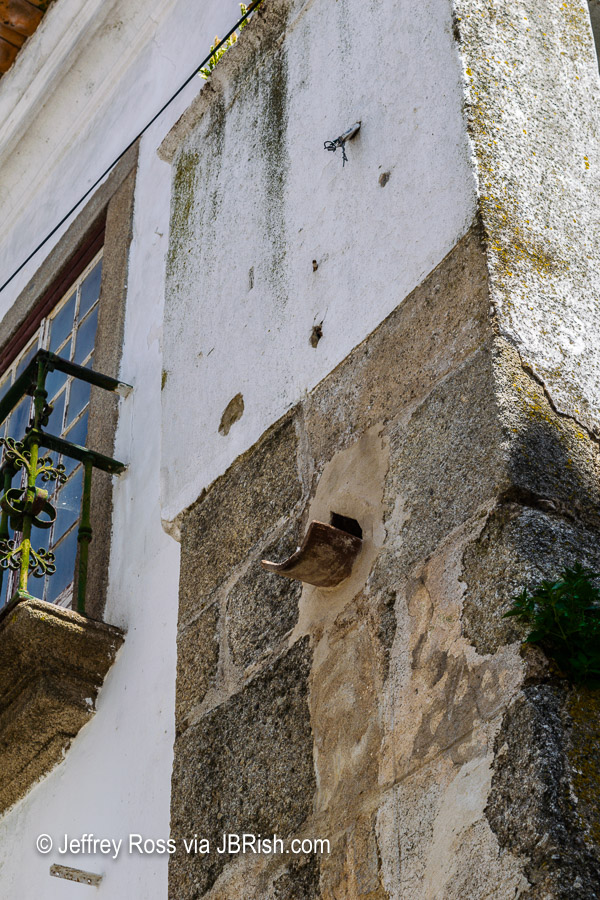
and this water box was part of the Silver Water aqueduct storage facilities.

Narrow side streets in the old part of town where support beams cross the alleyways to help stabilize the walls of the buildings had many twists and turns.
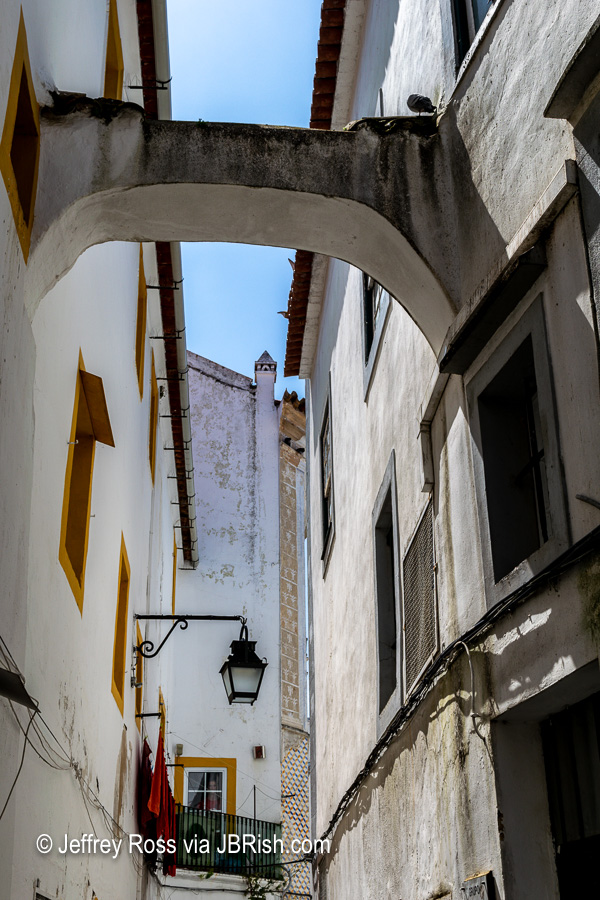
Once again we see tiles used as artistic accents outside this ceramic and craft shop. The name of the shop, Artesanato Beijinho, translates to Handicrafts Kiss.
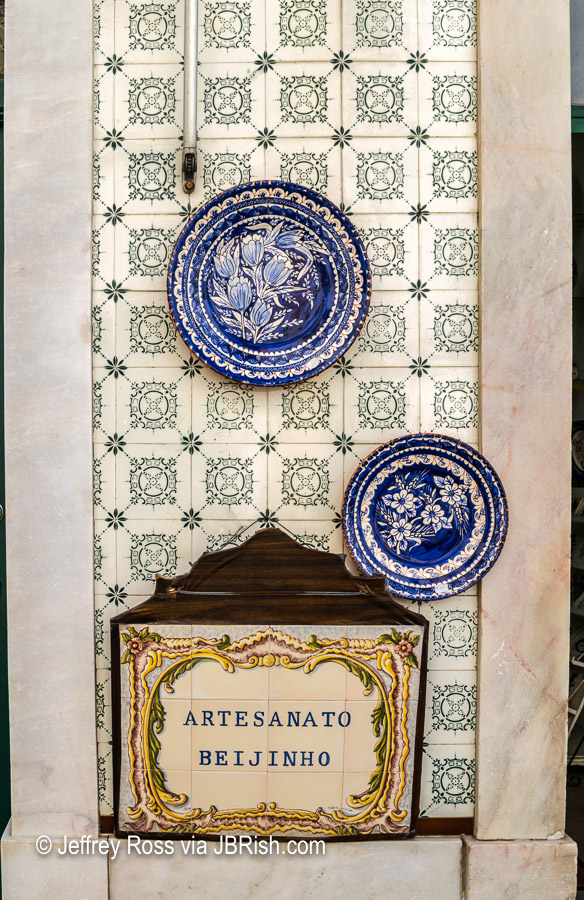
Little did I know prior to this trip that Portugal produces nearly half of the world’s supply of cork. Apparently those countries in and around the western Mediterranean have ideal conditions for the cork oak (Quercus suber L.) When considering countries that have the ability to grow this tree, it is said that: “…Portugal, rightly occupies the foremost position. It has 500 factories, which employ about 20,000 workers…” and “Cork is the most important of Portuguese exports and alone represents about 16 percent of the total foreign income derived from trade.**”
** The cork industry in Portugal
At one stop, our guide showed us a piece of the bark from this tree as she explained role Evora plays in this prolific Portuguese industry.
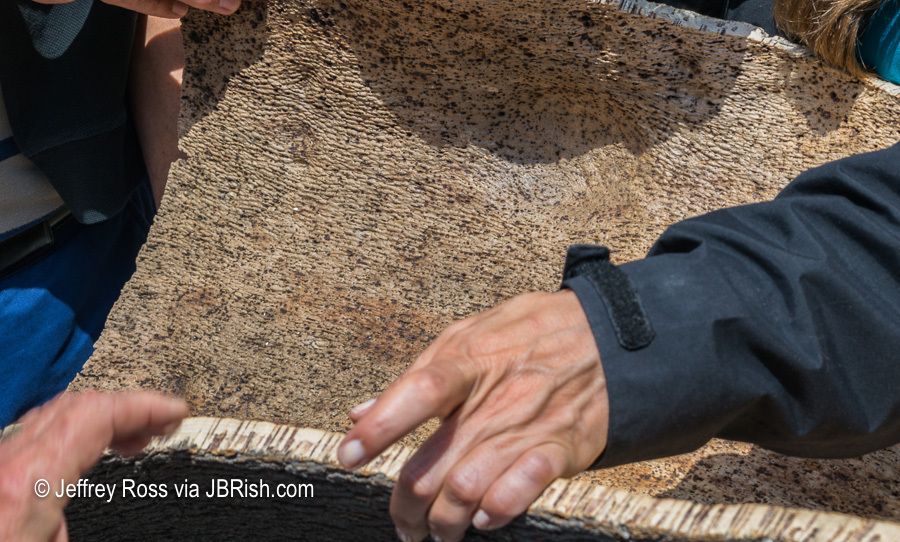
Here she demonstrates the thickness of the bark and how corks are punched from their casing. We were able to find many items made from cork including hats and pocket books.
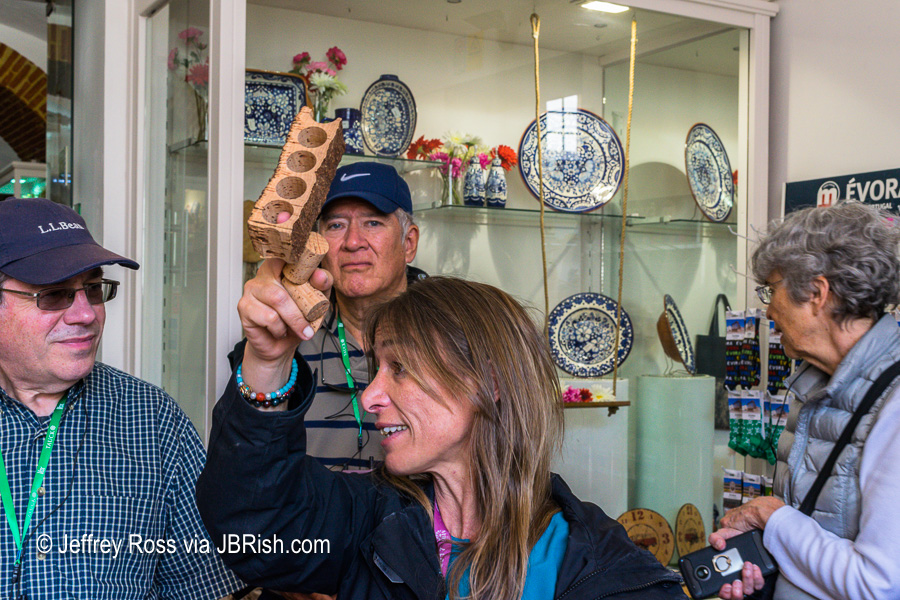
Evora is also home of fabulous ruins of The Roman Temple. Read more about the Temple by clicking HERE. Our guide had a pictorial representation of how the original temple appeared when complete.
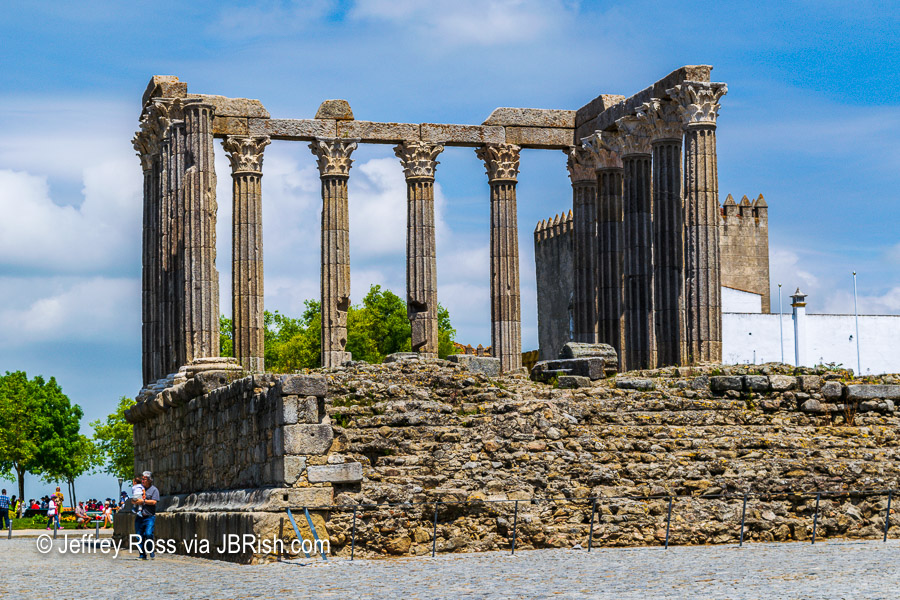

Évora’s cathedral (Sé Catedral de Évora) has architecture influenced by the Moors and thus resembles a fortress. The Christians who later inhabited this area, made their own modifications to the structure. This is touted as the largest medieval cathedral in the country. While it’s main facade can be seen from far away, I particularly liked this side view from a nearby courtyard.
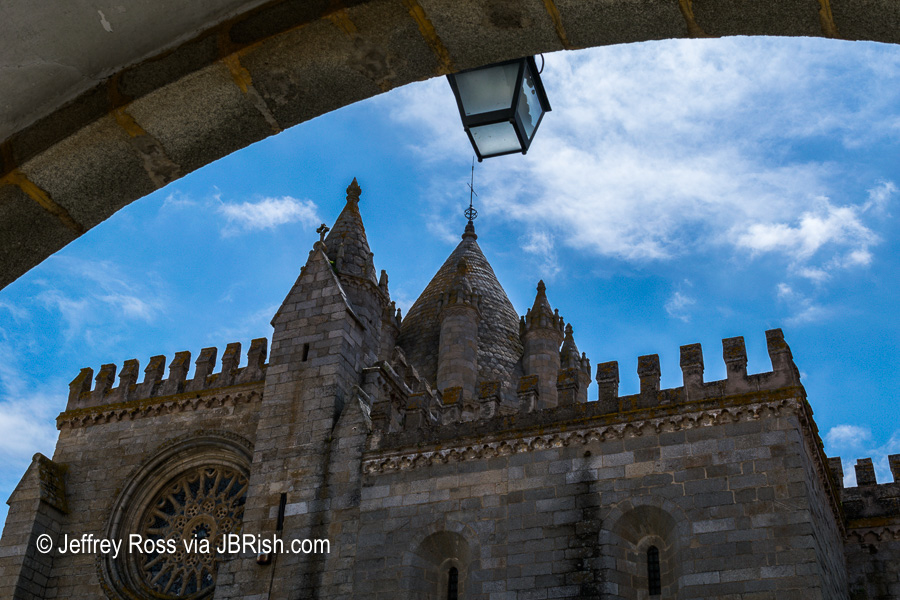
The main chapel contained an ornate altar constructed and trimmed in the Baroque style and is one reason why it was declared a UNESCO World Heritage site.
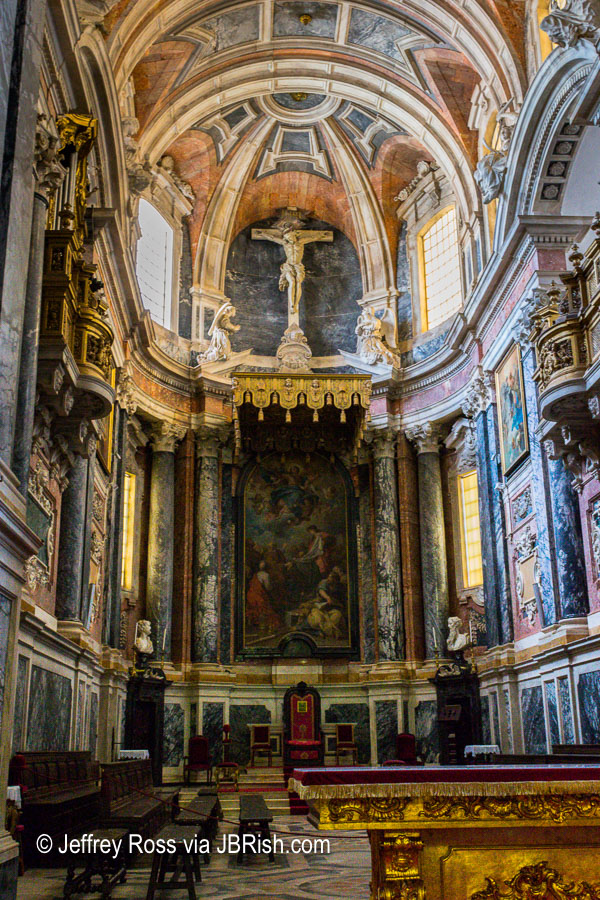
Perhaps one of the most curious artistic touches is the statue of a pregnant Virgin Mary.
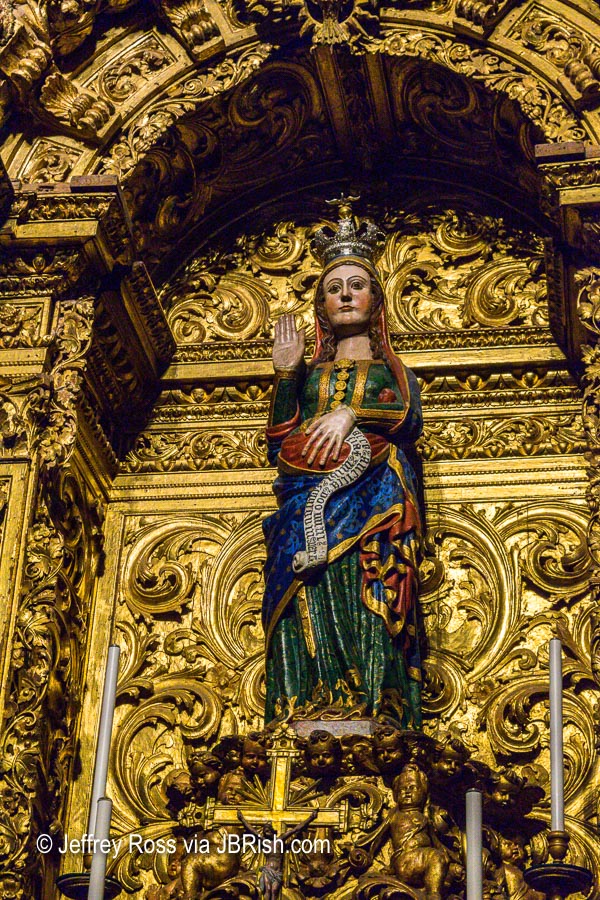
Before leaving, we had a pleasant and very worthy lunch at the historic Pousada Convento de Evora – Hotel Loios.

Even the sign for the men’s restroom had a creative, artistic touch!
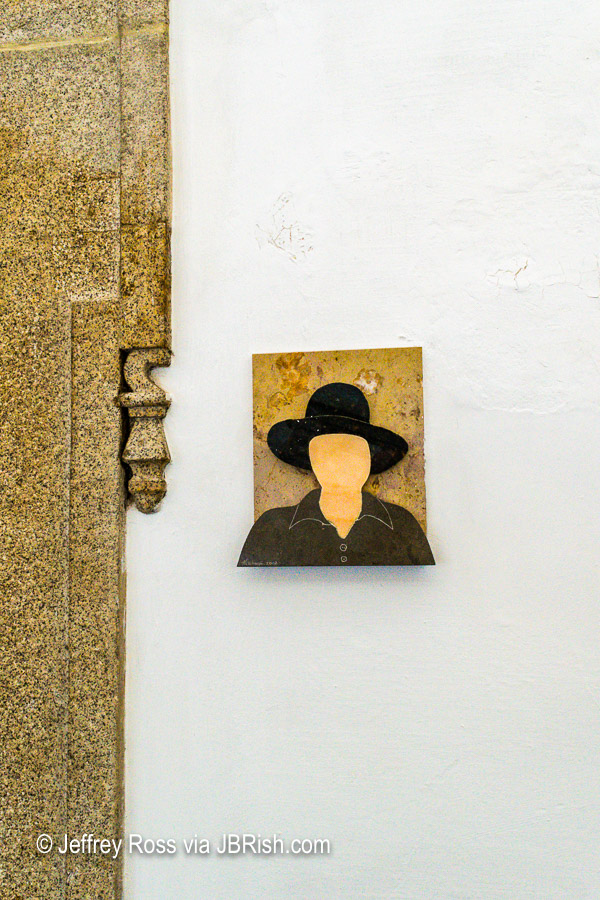
Our last stop in Evora this day was at another historic hotel and spa, the Convento do Espinheiro, developed from an 1834 monastery. We occupied one of the older heritage rooms which was crafted from monk’s quarters and exuded old world charm.

As one might anticipate, there were areas of the old monastery that were preserved as unique and beautiful examples of religious architecture. The Church of Our Lady of Espinheiro is open to guests and they are encouraged to visit and admire the various artworks.
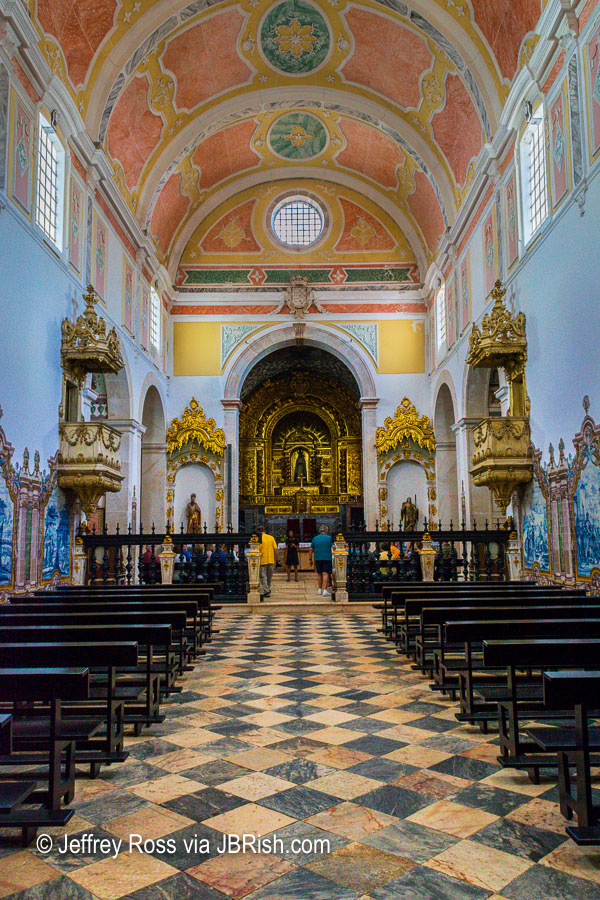
Also worthy and unique was the Restaurante Divinus with vaulted ceilings in the dining area. It was quite romantic and offered excellent cuisine.
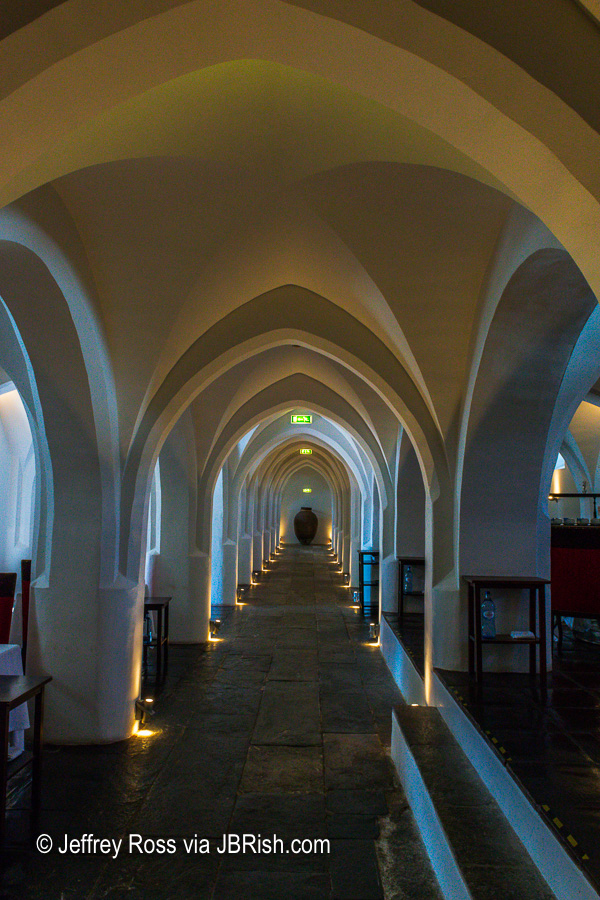
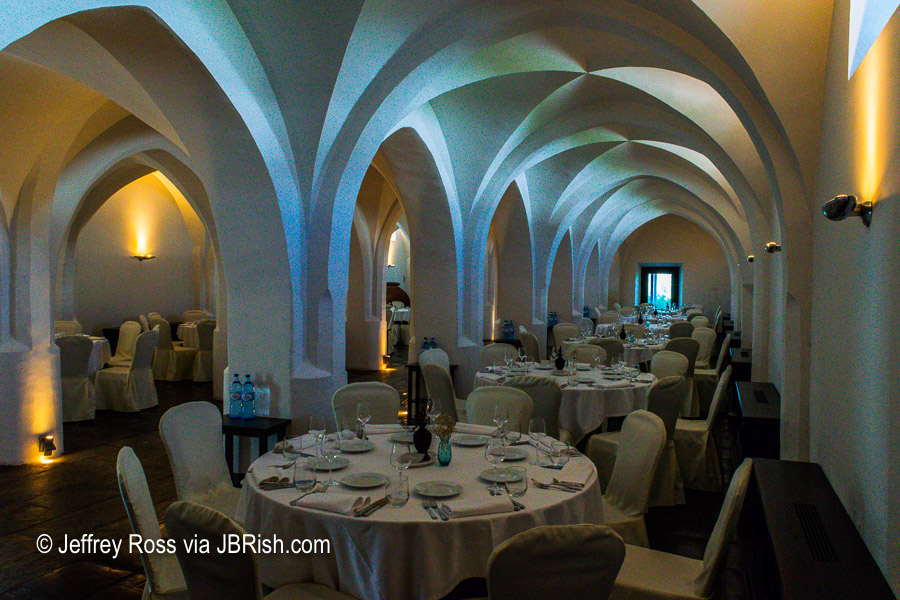
There is much to explore both inside and out. The sitting room below was laden with antiques and had cozy seating areas!

There was a special resident we were pleased to find as we explored the hotel grounds.
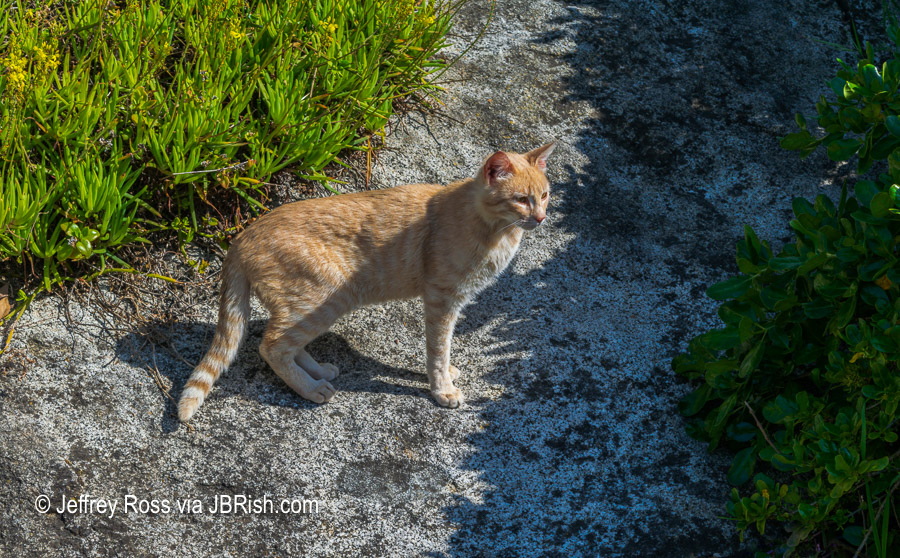
As devotees of gardens and plants, we were also delighted to pay homage to an olive tree that was more than one thousand years old.
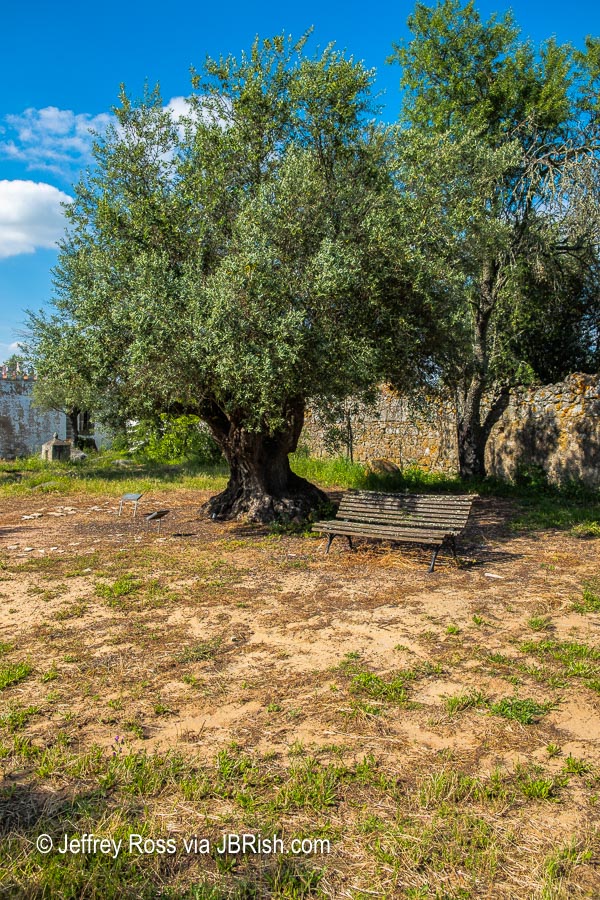
Before settling in and preparing for dinner, we walked to the front of the hotel and crossed the small village road opposite to take a distant glance at Evora from afar.
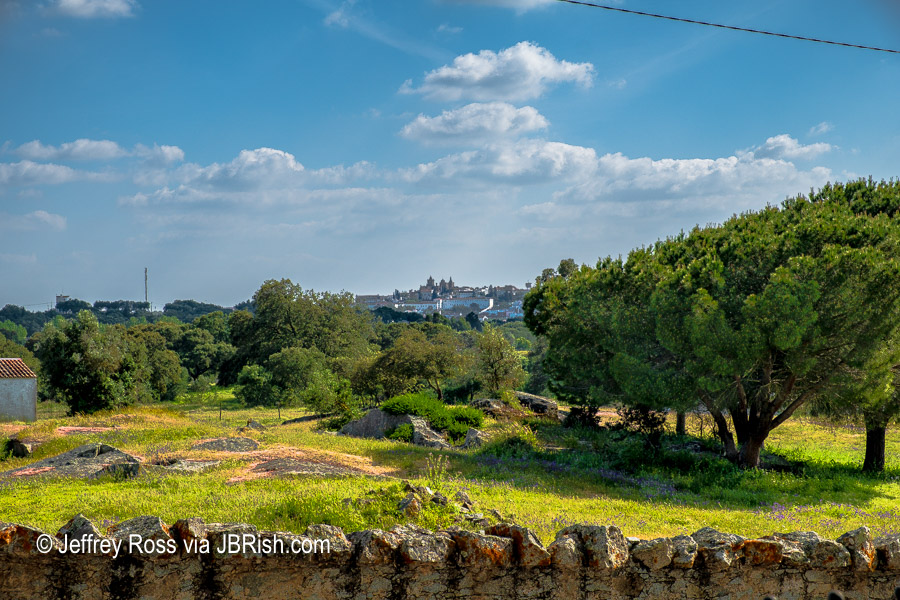
***************
Continue reading about our trip to Portugal and Spain.
Read more Hiking and Exploration posts HERE
**********
All original content on this blog is copyrighted by Jeffrey B. Ross with ALL Rights Reserved. While reference links back to JBRish.com are appreciated and encouraged, please acquire approval for any reproduction of original content from this website.
©Jeffrey B. Ross 2014 – 2019 – JBRish.com

